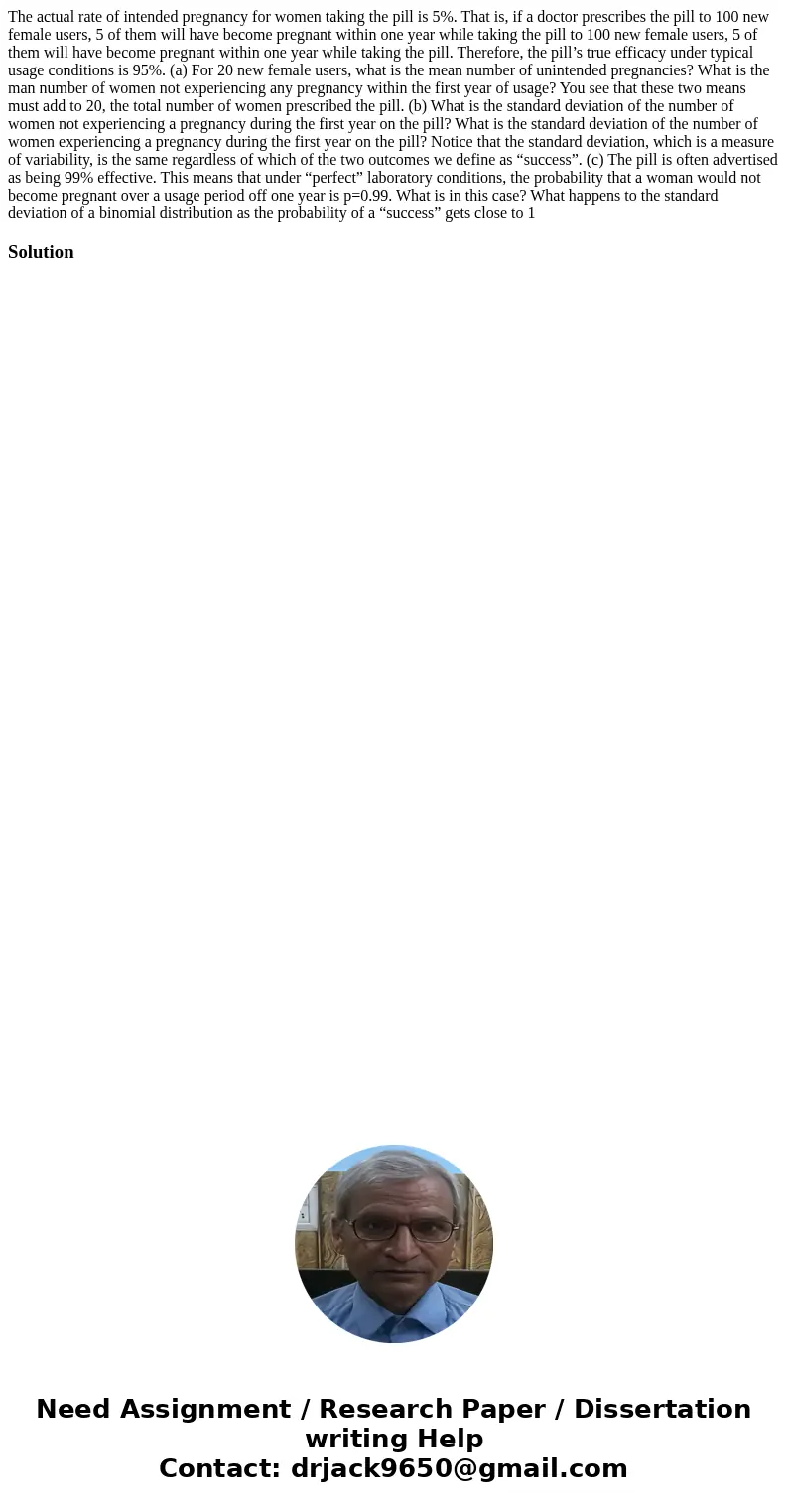The actual rate of intended pregnancy for women taking the p
The actual rate of intended pregnancy for women taking the pill is 5%. That is, if a doctor prescribes the pill to 100 new female users, 5 of them will have become pregnant within one year while taking the pill to 100 new female users, 5 of them will have become pregnant within one year while taking the pill. Therefore, the pill’s true efficacy under typical usage conditions is 95%. (a) For 20 new female users, what is the mean number of unintended pregnancies? What is the man number of women not experiencing any pregnancy within the first year of usage? You see that these two means must add to 20, the total number of women prescribed the pill. (b) What is the standard deviation of the number of women not experiencing a pregnancy during the first year on the pill? What is the standard deviation of the number of women experiencing a pregnancy during the first year on the pill? Notice that the standard deviation, which is a measure of variability, is the same regardless of which of the two outcomes we define as “success”. (c) The pill is often advertised as being 99% effective. This means that under “perfect” laboratory conditions, the probability that a woman would not become pregnant over a usage period off one year is p=0.99. What is in this case? What happens to the standard deviation of a binomial distribution as the probability of a “success” gets close to 1
Solution

 Homework Sourse
Homework Sourse